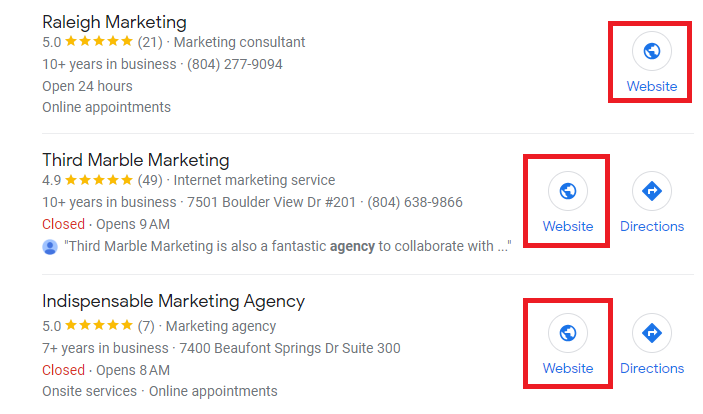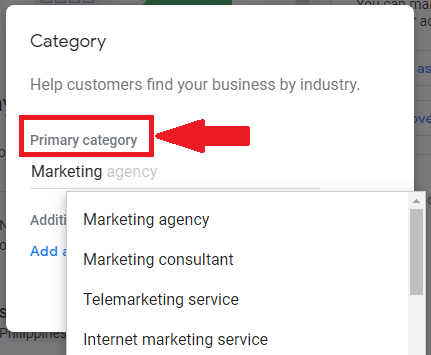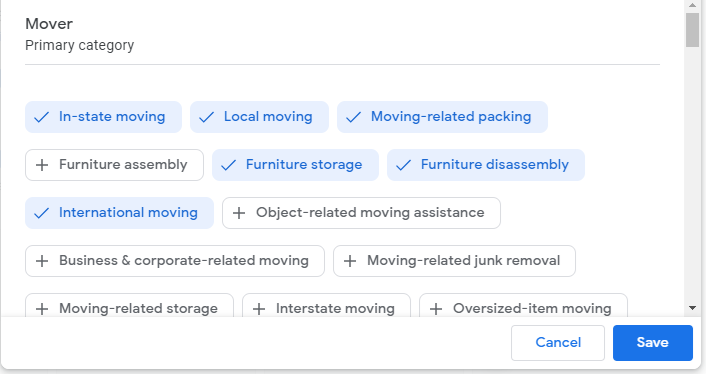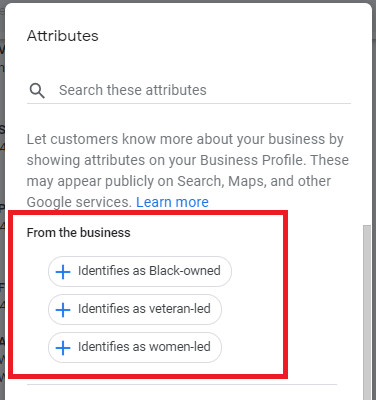5 Tactics to Rank Higher on Google My Business (Now Google Business Profile)
The Google Maps Ranking Factors They Don't Want You to Know
Achieving a higher ranking on Google Maps may seem like a complex science, but, in my experience, a typical local service-based business can simplify its approach by focusing on just five key things.
Before delving into these, it's important to acknowledge that there are limited actions you can take within the Google Business Profile (GBP), formerly known as Google My Business (GMB), to directly influence rankings.
Now, let's zero in on a critical aspect that happens away from your GBP but directly impacts rankings: optimizing the on-page elements for the website page linked to your Google Business Profile (GBP).
This step is indispensable for securing higher rankings on Google Maps. Undoubtedly, the landing page of your Google Business Profile (GBP) wields significant influence, making it a game-changer for local businesses. The URL you select for your GBP listing also plays a pivotal role in determining rankings.

5 Tactics to Boost Your Google Business Profile Rankings
(in 24-72 hours)
(✅Yes when you make changes to a GBP, you tend to see the impact of that within hours)
#1. Keywords in Business Name
Want to know how to rank #1 on Google? Here's a controversial, but effective ranking tactic that might just help you get there!
Ever since the creation of local packs on Google, the keywords baked within a business's name have had a substantial influence over rankings. It's been one of those SEO secrets that savvy businesses have used to claim their spot in the local 3 pack.
Did you know that having keywords in your business name is the #2 ranking factor in the 2023 Local Search Ranking Factors report?
Changing the business name legally or registering a DBA that includes keywords can dramatically improve local search visibility. Now, before you rush to change your business name, there are a few things to keep in mind, so please consult a professional.

#2. Review Recency
Ever wondered if Google reviews impact your local ranking? The answer is YES! Google reviews can give your rankings a significant boost.
However, after reaching a
certain threshold (10 reviews), the sheer number of reviews ceases to affect rankings. Instead, the recency of your reviews becomes the key factor. There is
a direct correlation between new reviews and ranking increases!
Keep a trend of consistent, new reviews to increase and maintain three-pack rankings.

#3. Primary and Secondary Category Selections
One thing you've got to nail down to rank higher on Google Maps and Search is choosing the right primary category for your Google Business Profile. Out of all factors, knowing how to choose a category for your Business Profile has the greatest impact on local pack rankings.
One thing to quickly note is that these categories tend to change from time to time, and you need to monitor that or you'll experience a decrease in rankings. Currently, you can choose up to 10 categories for your business: 1 primary category, and rest as secondary categories.
Once you've settled on your primary category, the next tip is around figuring out what to do with the remaining 9 available categories. Fortunately, for those keen on leveraging local SEO, there is a simple local strategy at your disposal.
Go ahead and select the 9 categories that align best with your services. This approach is the most practical, but it's not the most effective.
Let's say you're a multi-specialty clinic in Richmond VA, offering services ranging from pediatric dentistry to orthodontics. Now, you're keen to secure a top spot in local searches for 'Pediatric Dentist Near Me.'
Keeping with this example here's the hurdle you'll encounter: You'll be competing against specialized pediatric clinics that have 'Pediatric Dentist' as their primary GBP category. The odds of surpassing them in rankings are quite slim if not zero. Even with that being said, the simplest approach is to choose the 9 secondary categories that make the most sense based on your services. The tip below is how to overcome this.
Practitioner Listings Boost Your Google My Business Ranking
Google's got a feature for businesses with multiple practitioners or public-facing professionals (doctors, lawyers, dentists, realtors, agents, etc.). You can create separate Google Business Profile (GBP) listings for each practitioner or agent. Now, why's this a game-changer? Well, let's say you're aiming to increase visibility in local searches for 'Auto Insurance Agency Near Me.' No sweat, you can make it happen.
Just create a GBP for one of your insurance agents and choose 'Auto Insurance Agent' as the primary category. Looking to snag the top spot for 'Teeth Whitening Near Me'? Google's got your back. Craft a practitioner GBP, select 'Teeth Whitening Service' as the primary category, and you're on your way. Want some visibility as a 'Personal Injury Attorney Near Me'? You catch my drift.
Oh, and here's a pro tip: link each GBP listing to the specific service page on your website. For instance, if you're creating a practitioner listing to rank for 'Emergency Dentist Near Me,' make sure it's linked to the dental emergency services page on your website. It's like telling Google, 'Hey, this is where you'll find all the dental emergency goodness.'
Picking the right primary category for your Google Business Profile listing is the most important factor in the ranking of your business which can help improve your online visibility and attract more customers.

#4. Services Selection
Everyone wants to know the key to ranking well on Google. While there are many theories about services in Google Business Profiles being a ranking factor, is it true? Yes. Adding predefined services to a GBP does have a positive impact on your rankings, but the extent of this impact appears to vary based on the industry and market. Additionally, these predefined services seem to influence both explicit and implicit keywords, with the impact on explicit keyword ranking being more significant.
Explicit vs Implicit Keywords - Let Me Explain
Imagine someone in Richmond VA needs a plumber. If they search for "plumber," (implicit keyword) Google is likely to provide local results, assuming the user is looking for a nearby plumbing service. The searcher may then see a list of local plumbing companies in Richmond VA.
Now, let's say another person is specifically looking for a plumber in a particular neighborhood within Richmond, such as the Carytown. In this case, they might search for "plumber Carytown" (explicit keyword). Google, recognizing the location-specific query, would likely prioritize results that match both the plumbing service and the specified location.
How Long Does Local SEO Take to Show Results?
Typically when you make changes to a GBP, you tend to see a ranking impact within 24 - 72 hours.

#5. Identity Attributes
Fill out relevant identity attributes for your business. Utilize attributes like 'women-led' or 'Black-owned' to provide additional information about your business. This feature has a direct impact on ranking in the 3-pack and Google Maps.

Knowing, and understanding which Google My Business features impact ranking is one of the most important factors for local search success. Google doesn’t comment directly on ranking factors. They do give some general ranking guidelines, but you need to be continually testing the GMB features to understand the value of each one.
Get in Touch to Learn How to Rank Higher on Google My Business
Are you a local service company in Richmond VA or United States looking to rank higher on Google My Business? If your goal is to dominate the Google Local Pack and score new customers, we are your go-to marketing partner. We specialize in SEO for local service businesses, offering a proven approach to SEO services.
Whether you're seeking marketing strategy consulting or monthly local SEO services specifically designed for pest control, we've got you covered. Contact us today to learn more and take your company to the next level.




